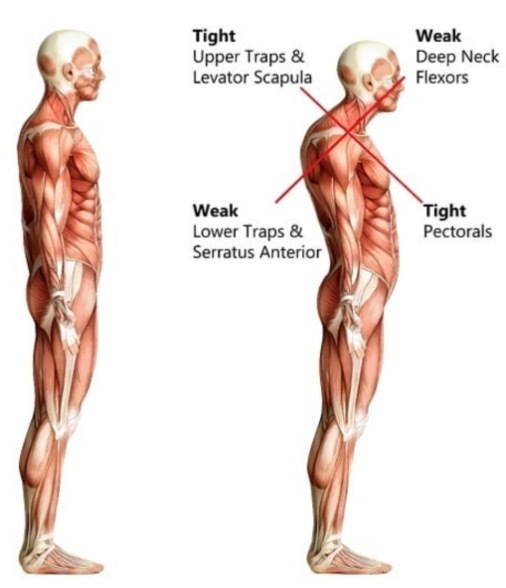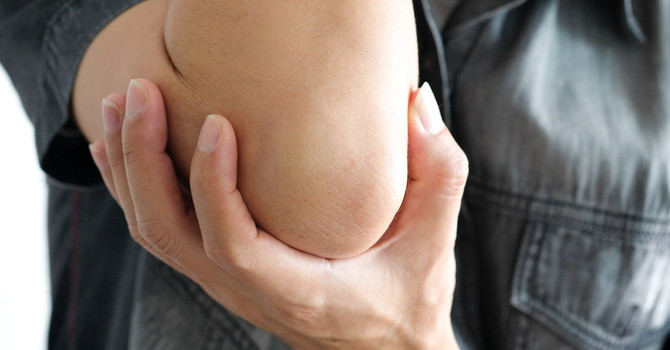
Posture and how it creates “Upper Crossed Syndrome “
Upper Crossed Syndrome is less of a syndrome and more of a pattern of muscular imbalances that we commonly see in patients with neck pain.
Upper Crossed Syndrome is largely a result of current societal habits and the amount of time that we spend staring at screens. When we are working at a desk, looking at a phone, or watching TV, we are often held in the same posture for extended periods of time. In fact, if you work in an office you may be in that posture for over eight hours a day! When the body is in a sustained posture the muscles will adapt. Therefore, muscles that aren’t activated to sustain that posture become very weak, while the muscles that are held under a lengthened position will conversely become overactive, tight and irritable. This is called a “crossed” syndrome because the pattern of weak/tight create an “X” in the upper body.
The most commonly affected weak/tight muscles are:
The tight muscles:
The suboccipital muscles: These muscles are at the base of your skull and the top of your neck. They are often very tight due to the posture of your head while you look at a computer. When these muscles get tight, they become very tender and can be a leading cause of cervicogenic headaches (headaches stemming from your neck).
The levator scapulae: This is a muscle that attaches to the top of your shoulder blade and extends into neck. It is often very tight in upper cross syndrome and can be a common neck pain generator.
The upper trapezius: The trapezius is an interesting muscle because it has 3 parts. The upper trapezius is typically overactive and apart of the “tight” group in Upper Crossed Syndrome, while the lower trapezius will be weak and inhibited. The middle is often unaffected in this syndrome.
Pectoralis major/minor: Pec major and minor tend to also become facilitated when someone is dealing with upper crossed syndrome. This is a result of sitting with your head forward and your shoulders rounded.
The weak muscles:
The deep neck flexors: The deep neck flexors are a group of muscles that sit behind your trachea and esophagus. They play an important role in flexion of your upper cervical spine. With the common forward head posture we see in today’s society, these muscles seldomly have to work hard and as a result become very weak. Strengthening these muscles serve a very important role in the treatment of neck pain associated with Upper Crossed Syndrome.
The lower trapezius: As discussed above, the trapezius is made up of lower, middle, and upper sections. While the upper trap is often a very tight, shortened muscle, the lower trapezius is often weak and overpowered by the tighter muscles above it. As a result, we develop poor control over our scapula (shoulder blade) which can ultimately lead to imbalances in the both the shoulders and the neck.
Neck pain patients that presents with any of these patterns will be treated in our office using manual therapy to help release these chronically tight muscles and strengthening exercises to help retrain the muscles that are weak. This is a very effective treatment not only to reduce symptoms but eliminate recurrences of pain.





